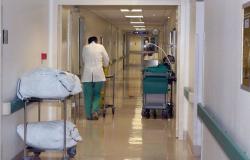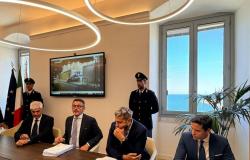The deadline for submitting has now expired observations at the PUMS in Monza, the Plan for sustainable mobility which in fact plans the interventions that the municipal administration should organize to improve traffic and travel – from any point of view, by car and bus, by train and by metro (whenever it will be), on foot or by bike. The final word is taken on June 3rdthe deadline for submitting observations, i.e. proposals for modifications, and many have done so: among them, the association Hq Monza and Fiab Monza by bike. An idea of what they proposed.
Monza, the mobility plan: small buses for the city
“The PUMS document drawn up by the Municipality of Monza leads to an overall evaluation which we would like to summarize immediately: we are faced with a rich analysis of the existing condition integrated with interesting guidelines, but it does not seem to us to be a real strategic plan for sustainable mobility as indicated by the Eltis guidelines” writes the association HQ Monzaaccording to which “There is a lack of a hierarchy of interventions, an effective consecutio logic. What should be done first and what after. The municipal document lacks a true and credible timetable for the interventions, given that the five-year and ten-year subdivision, although apparently compliant with the aforementioned guidelines, is too generic and not very significant”.
For Hq if “it is logical and useful to predict the construction of a LPT line (public transport, ed) protected circular route around the historic centre, however, a similar and wider ring is missing in the semi-peripheral area which could, among other things, use the spaces originally foreseen (in particular starting from the Benevolo PRG) for avenues never completed in the city. And then, “we have not detected an adequate analysis nor an indication of action specifically aimed at transferring mobility to the future M5 line in urban areas, which is important in general but also for economic reasons, given the management costs expected for the M5 itself”.
For Hq Monza “when we talk about the modernization (electrification) of the bus fleet, we don’t even mention the fundamental issue of size of the vehiclesand for the urban and road structure of Monza they should only be small. No mention, not even for experimental purposes, of the drt, public transport on demand”. Translated it is the Demand responsive transport that for Hq “face today’s challenges in the best possible way. This idea implies a completely new way of perceiving the public transport network and the role of the passenger. And the passenger’s needs come first.”
“The reasons in favor of demand-driven buses would be highlighted with great clarity if our public bodies, including the Agency and the Municipality, decided to actually address the issue of public transport according to modern marketing-oriented criteria, which for example, the Pums of the MB Province is trying to start doing things, but too timidly. And while medium-sized work groups are now also fragmenting, smart working and home learning are starting to take hold. Home-office travel is decreasing and will continue to decrease more and more. The neighborhoods, which in the industrial and tertiary eras were like large dormitories, will soon return to life and to be lived in. We are moving towards a multicentric city.”
Monza, the mobility plan: the Zone S, M and Q proposal
“On the reorganization and limitation of the circulation of private vehicles, for Monza we propose a different and more advanced model. With Q areas “which means neighborhoods, that is, limited traffic areas, one for each neighborhood. Or Areas S, where the S stands for schools, “in and around schools it is time to put an end to the chronic chaos criticized by everyone” and finally Areas M, “Monza domes. On the various road routes used and abused for merely crossing the city, transit can only be reserved for vehicles of residents of Monza, or of Monza and neighboring municipalities. In specific time slots, or 24 hours a day. Also in this case, the technologies allow varied and sophisticated articulations.”
Monza, the mobility plan: Area B and C? No, proposed Zones S, M and Q
Then there are Monza by bike and Fiab who presented other proposals based on the “General plan for cycling mobility” formulated by the Ministry of Infrastructure and Sustainable Mobility. “We are very happy that the PUMS of Monza has finally been adopted by the city council and the possibility of giving feedback from our point of view. “The plan offers concrete indications and tools (for planning cycling mobility in cities, making reference to concepts such as democracy of public space (fair distribution of space between different road users) and sharing of space”.
For Monza, “we suggest transforming Piazza Carducci in a play area for children. It seems particularly suitable to us, due to the presence of trees, which provide shade in summer and regulate the temperature. Furthermore, in the historic center there is no dedicated space that welcomes families with small children.” And then “we propose the closure of viale Cavriga in correspondence with the calendar, timetables and school closures, which are the moments in which traffic drops significantly in Monza and to progressively lengthen the closing times also during the rest of the year (closing from 9am to 5pm instead of from 10am to 4pm) until eventually reaching total closure”.
“For this reason, among other interventions to be planned, it will also be necessary to evaluate the removal of gates on cycle paths, which hinder the passage of cargo bikes for transporting children and pedal-assisted tandems for people with disabilities”. That’s not all: “We would add to the Pedibus and the Bicibus, which are initiatives which, in addition to the many benefits mentioned, also promote sociality and integration, also experimentation and promotion of car pooling initiatives for those children who live far from school, i.e. sharing a private vehicle between families belonging to the same class or school (exchanging car rides). This solution together with the Pedibus and the Bicibus contributes to improving mutual knowledge, strengthening bonds between children and integration into the group, and building community, increasing the sense of belonging between parents”.






